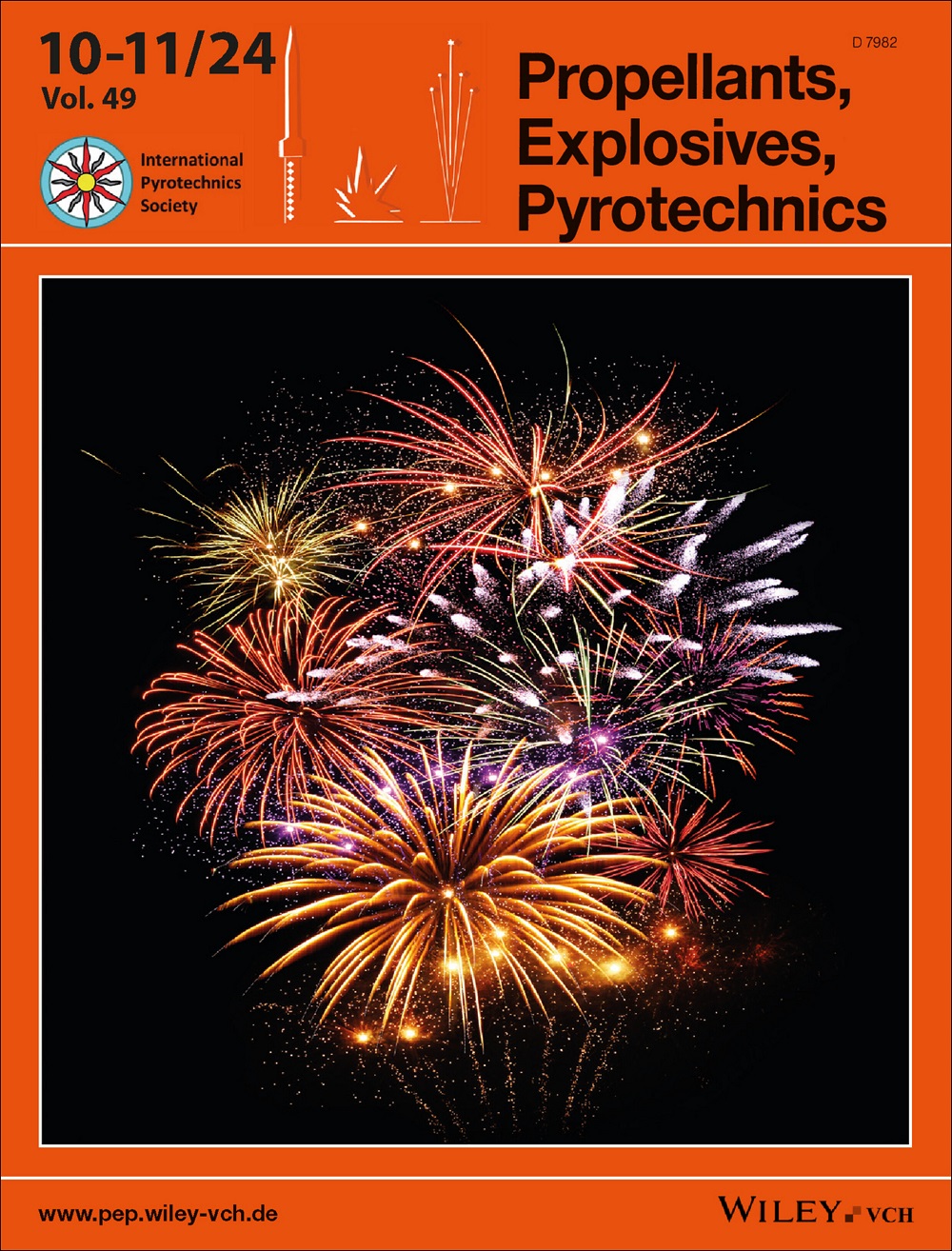Energetic transition metal complexes based on 1‐allylimidazole and nitrocyanamide: Syntheses, characterizations and catalytic performances on the thermal decomposition of ammonium perchlorate
IF 2
4区 工程技术
Q3 CHEMISTRY, APPLIED
引用次数: 0
Abstract
To explore combustion catalysts for solid propellants, four novel energetic coordination compounds were prepared with the anion of nitrocyanamide (NCA) as the ligand and 1‐allyl‐imidazole (AIM) as the ligand, and transition metals Mn, Co, Ni, and Cu as the central ions. The structures of these compounds were [Mn(AIM)基于 1-烯丙基咪唑和硝基氰酰胺的高能过渡金属配合物:合成、表征和对高氯酸铵热分解的催化性能
为了探索固体推进剂的燃烧催化剂,以硝基氰酰胺(NCA)阴离子和 1-烯丙基咪唑(AIM)为配体,以过渡金属锰、钴、镍和铜为中心离子,制备了四种新型高能配位化合物。这些化合物的结构分别为[Mn(AIM)4] (NCA)2 (1)、[Co(AIM)4](NCA)2 (2)、[Ni(AIM)4](NCA)2 (3)和[Cu(AIM)4](NCA)2 (4)。结果表明,所有化合物都具有很高的能量密度,其中化合物 2 的质量能量密度(Eg)为 17.9 kJ g-1,体积能量密度(Ev)为 25.59 kJ cm-3。利用 DSC 研究了这些化合物对高氯酸铵(AP)热分解的催化作用。在 AP 样品中添加 5 % 的催化剂可提高高温分解温度,并显著增加放热量。化合物 4 的催化性能最好,放热量增加了 1739 J g-1,分解温度提高了 88.2 ℃,活化能降低到 74.74 kJ mol-1。这些结果证明了这些化合物作为固体推进剂燃烧催化剂的潜力。
本文章由计算机程序翻译,如有差异,请以英文原文为准。
求助全文
约1分钟内获得全文
求助全文
来源期刊

Propellants, Explosives, Pyrotechnics
工程技术-工程:化工
CiteScore
4.20
自引率
16.70%
发文量
235
审稿时长
2.7 months
期刊介绍:
Propellants, Explosives, Pyrotechnics (PEP) is an international, peer-reviewed journal containing Full Papers, Short Communications, critical Reviews, as well as details of forthcoming meetings and book reviews concerned with the research, development and production in relation to propellants, explosives, and pyrotechnics for all applications. Being the official journal of the International Pyrotechnics Society, PEP is a vital medium and the state-of-the-art forum for the exchange of science and technology in energetic materials. PEP is published 12 times a year.
PEP is devoted to advancing the science, technology and engineering elements in the storage and manipulation of chemical energy, specifically in propellants, explosives and pyrotechnics. Articles should provide scientific context, articulate impact, and be generally applicable to the energetic materials and wider scientific community. PEP is not a defense journal and does not feature the weaponization of materials and related systems or include information that would aid in the development or utilization of improvised explosive systems, e.g., synthesis routes to terrorist explosives.
 求助内容:
求助内容: 应助结果提醒方式:
应助结果提醒方式:


